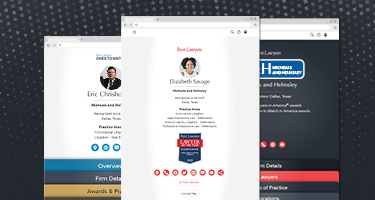The decision is the LAT’s first interpretation of the new paragraph 1 of section 3.1 (1) of the SABS, which states as follows:
“3.1 (1) For the purposes of this Regulation, an impairment is a catastrophic impairment if an insured person sustains the impairment in an accident that occurs on or after June 1, 2016 and the impairment results in any of the following:
Paraplegia or tetraplegia that meets the following criteria:
- The insured person’s neurological recovery is such that the person’s permanent grade on the ASIA Impairment Scale, as published in Marino, R.J. et al, International Standards for Neurological Classification of Spinal Cord Injury, Journal of Spinal Cord Medicine, Volume 26, Supplement 1, Spring 2003, can be determined.
- The insured person’s permanent grade on the ASIA Impairment Scale is or will be, A, B or C, or D, and
- the insured person’s score on the Spinal Cord Independence Measure, Version III, Item 12 (Mobility Indoors), as published in Catz, A., Itzkovich, M., Tesio L. et al, A multicentre international study on the Spinal Cord Independence Measure, version III: Rasch psychometric validation, Spinal Cord (2007) 45, 275-291 and applied over a distance of up to 10 metres on an even indoor surface is 0 to 5,
- the insured person requires urological surgical diversion, an implanted device, or intermittent or constant catheterization in order to manage a residual neuro-urological impairment, or
- the insured person has impaired voluntary control over anorectal function that requires a bowel routine, a surgical diversion or an implanted device.”
The issue in Patel was the interpretation of the word “permanent” in section 3.1 (1), paragraph 1.
Ms. Patel was involved in a motor vehicle accident on November 10, 2016. On December 14, 2016, she was assessed by Dr. McGillivray (physiatrist) who diagnosed her with T7 ASIA Impairment Scale C (motor incomplete non-functional paraplegia). On January 17, 2017, Ms. Patel was assessed again by Dr. McGillivray and her diagnosis was changed to T7 ASIA Impairment Scale D (motor incomplete paraplegia). In addition to her scores on the ASIA Impairment scale, Ms. Patel’s score on the Spinal Cord Independence Measure was less than 5, she required urological diversion and she had impaired control over anorectal function. As a result, Dr. McGillivray found Ms. Patel to meet the Catastrophic definition.
On June 2, 2017, Ms. Patel was assessed by Dr. Farhadi (neurosurgeon), on behalf of the insurance company. Dr. Farhadi agreed with Dr. McGillivray’s findings; however, Dr. Farhadi opined that because spinal cord injuries of the type Ms. Patel suffered have the potential to improve over the 18-24 month period post-accident, he would not conclude she was catastrophically impaired at that time. Dr. Farhadi recommended that her catastrophic eligibility be re-assessed at the 2 year mark. Based on Dr. Farhadi’s opinion, the Respondent denied Ms. Patel’s claim for Catastrophic designation.
At the LAT, the Respondent argued the word “permanent” must be given some effect and because Ms. Patel’s neurological recovery was still changing, a “permanent” ASIA impairment score could not be determined. Accordingly, the Respondent argued that it was premature to designate Ms. Patel as catastrophic.
The Applicant submitted that by requiring an additional assessment at the 2 year mark, Dr. Farhadi was reading in requirements that were not contained in the SABS because the word “permanent” does not include a fixed temporal element to this definition, as do other tests for Catastrophic Impairment. Had the Legislature intended for there to be a temporal element in section 3.1 (1), one could have and would have been included. The Respondent’s narrow reading of the section was, therefore, an improper interpretation of this consumer protection legislation.
The Adjudicator agreed with the Applicant. The Adjudicator noted that the Applicant’s ASIA impairment score was agreed to by all assessors. Furthermore, there was no evidence to suggest that the Applicant’s score would change in the future. The Adjudicator noted that the wording of the section “is or will be”, indicates that the scores on the ASIA scale can change from A, B, C, or D. As long as the score fits within the categories outlined in section 3.1 (1), the Applicant will be considered catastrophically impaired.
The Adjudicator found that Ms. Patel’s “potential” to improve does not mean that her permanent score on the ASIA impairment scale cannot be determined, and by adding in the requirement that two years must elapse before Catastrophic impairment can be determined under this section, Dr. Farhadi was going beyond his role as medical assessor and into the realm of interpreting the SABS, which is the role of the tribunal.
This decision is significant not only as the first decision to interpret this paragraph of section 3.1, but also as a good example of the LAT taking a broad and purposeful approach to interpreting the SABS.
















